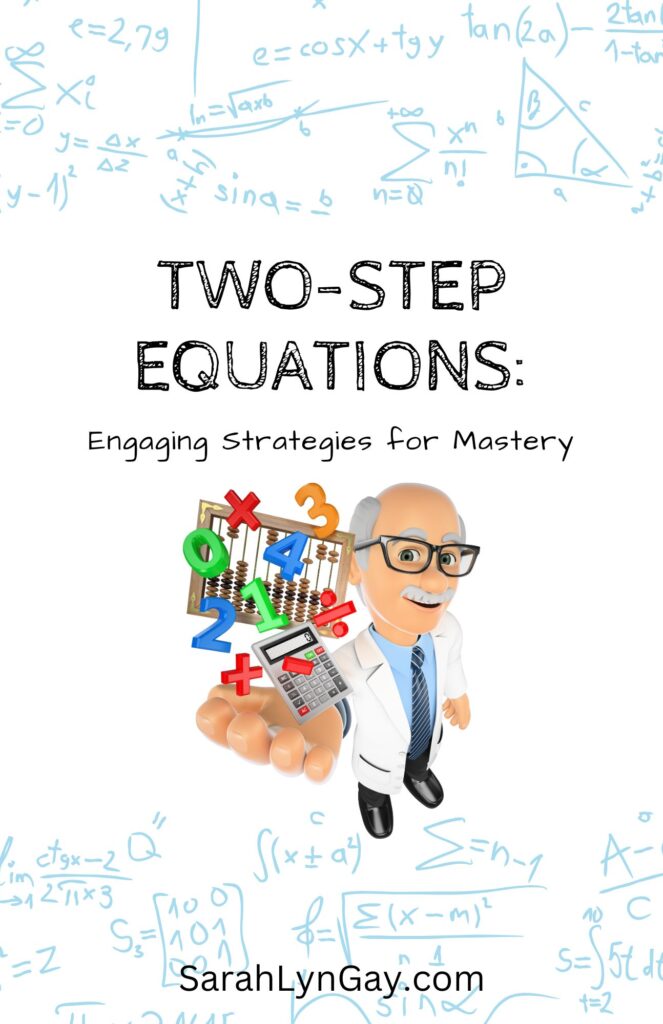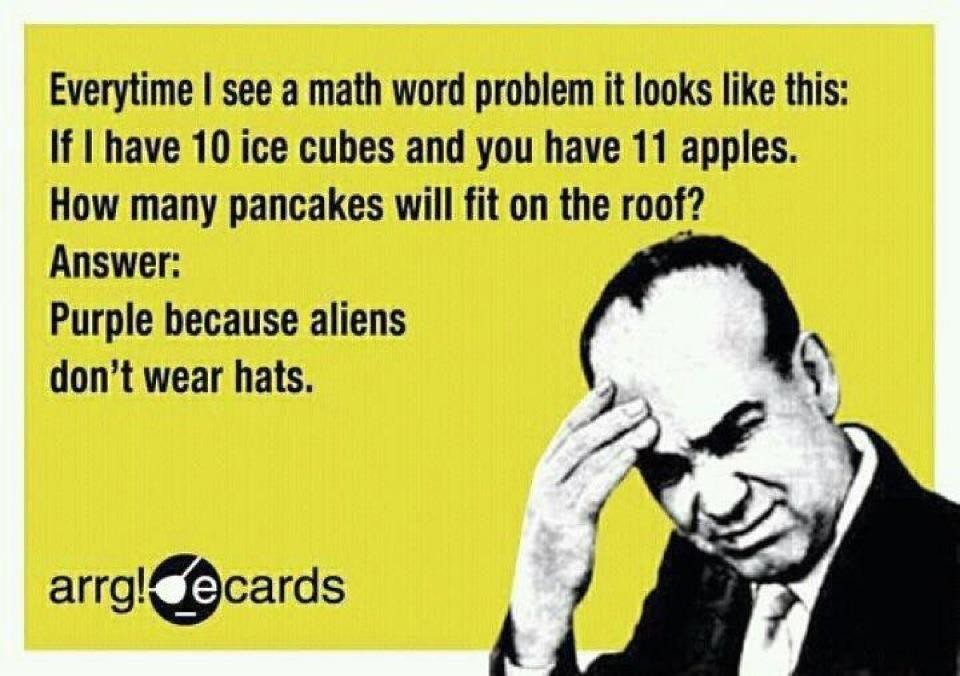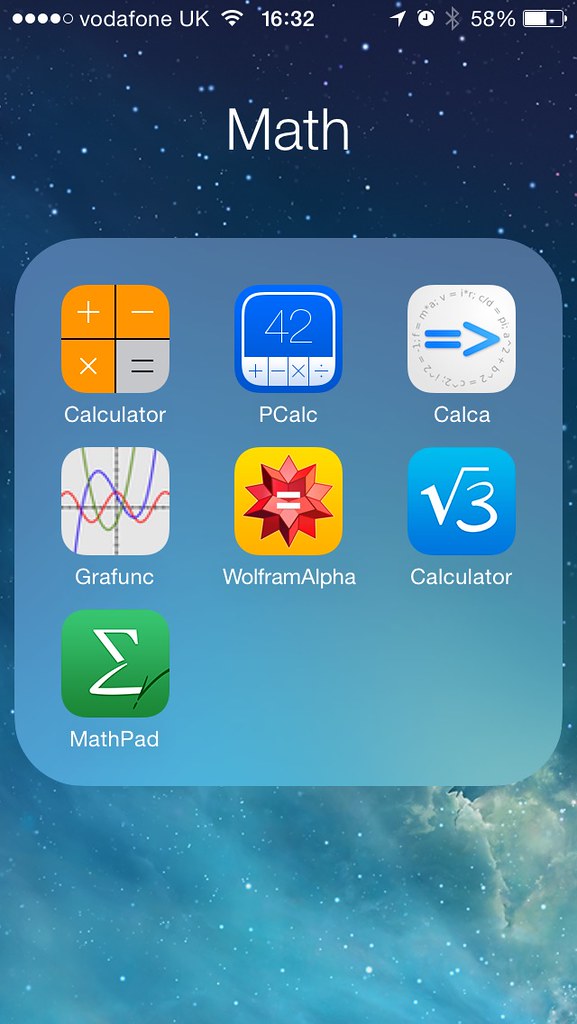Mastering the concept of two-step equations is a fundamental skill in algebra that sets the foundation for solving more complex problems. These equations require you to perform two inverse operations to isolate the variable, an essential step toward understanding algebraic expressions and functions. To enhance your fluency in handling two-step equations, a variety of interactive activities are available, which can make the learning process both engaging and effective.

Practicing with two-step equations doesn’t have to be a dry, monotonous task. From math games that enliven the practice sessions to worksheet relay races, there are numerous activities fashioned to cater to different learning styles and environments. Whether you are looking for group activities, individual practice, or digital platforms, there’s an array of options to help you improve your equation-solving skills.
By investing time in these activities, you’ll gain confidence in your ability to navigate through the solving process of two-step equations. This proficiency is not just a classroom requirement, but a vital part of solving real-world problems, where variables and unknowns are common.
With the support of effective and enjoyable practice methods, you will be able to tackle two-step equations with ease and move forward in your study of mathematics.
Understanding Two-Step Equations
Two-step equations are an essential concept in algebra that involve solving for an unknown variable through two distinct operations. These operations can include addition, subtraction, multiplication, or division. To tackle these equations effectively, you’ll need to apply inverse operations in a systematic manner.
Follow these general steps:
- Identify the operations used in the equation. Look for cues like plus, minus, times, and divided by symbols.
- Reverse the order of operations using the ‘inverse’ to isolate the variable. Remember the inverse of addition is subtraction and vice versa; the same applies to multiplication and division.
For example:
If you have an equation like 3x + 4 = 10, your goal is to find the value of x. Here’s a breakdown:
- First Step: Subtract 4 from both sides to get
3x = 6. - Second Step: Divide both sides by 3 to find
x = 2.
| Operation | Equation Step | Result |
|---|---|---|
| Subtract | 3x + 4 – 4 | 3x = 6 |
| Divide | 3x / 3 | x = 2 |
It’s crucial to perform the same operation on both sides of the equation to maintain balance—what you do to one side, you must do to the other.
Always check your solution by plugging your found value back into the original equation. This verifies that both sides equal each other, confirming that your solution for x is correct. By practicing this process, you’ll build a strong foundation for more complex algebraic equations in the future.
Interactive Two-Step Equation Activities
Engaging with interactive activities can significantly improve your understanding and retention of two-step equation concepts. These hands-on experiences cater to a variety of learning styles and provide immediate feedback.
Two-Step Equation Games
Math Play offers an engaging Two-Step Equations Basketball Game where you can practice solving equations in a competitive and fun format. You can play alone or in teams, making it a perfect classroom activity for reinforcing mathematical concepts.
Balance Scale Simulations
To understand two-step equations better, a balance scale simulation can be a powerful visual and interactive tool. By manipulating the weights on either side of the scale, you’ll gain a deeper comprehension of what it means to keep equations balanced as you work to isolate the variable.
Equation Scavenger Hunts
A hands-on approach like a scavenger hunt can invigorate the learning process. During an Equation Scavenger Hunt, you move around the room, solving clues and equations that build on each other. This physically active approach helps solidify your understanding of two-step equations through movement and problem-solving.

Real-Life Applications of Two-Step Equations
Two-step equations are more than just math on paper; they are a vital tool you can use to solve everyday problems, from computing time to managing money.
Word Problems and Story Contexts
When you encounter word problems in math, you’re essentially translating a story into a mathematical equation. For instance, if a recipe calls for a certain number of cups of flour that’s twice the amount of sugar plus one, and you know the sugar amount, you can set up a two-step equation to find the exact flour measurement needed. Utilizing activities that involve real-world scenarios strengthens your ability to make these connections swiftly.
- Step 1: Translate the words into an equation (e.g.,
flour = 2 * sugar + 1). - Step 2: Solve for the unknown variable.
Budgeting Exercises
Two-step equations are particularly useful in budgeting exercises. Imagine you have a monthly budget for dining out, but you’ve already spent a part of it and plan to save a specific amount. Calculate how much money you have left to spend by setting up an equation that subtracts your expenditures and savings from your total budget.
- Total budget = Money spent + Money saved + Remaining balance
- Solve this equation to find out your remaining balance.
By regularly practicing budgeting exercises, you’ll become more efficient at managing your finances and preparing for future expenses.
Two-Step Equations Worksheets and Printables
Two-step equation worksheets are an excellent tool for you to master the skills required to solve these types of algebraic equations. They provide a structured approach that can help enhance your understanding and proficiency.
Practice Problem Sets
Find a vast library of printable two-step equation worksheets here, which includes problems with integers, fractions, and decimals. These worksheets are a great way to practice solving equations by performing two separate operations, such as addition followed by division, to isolate the variable and find its value. Begin with simpler problems, and gradually move on to more complex ones to challenge your skills.
Cut and Paste Activities
For a more interactive learning experience, consider engaging in cut-and-paste activities that allow you to physically manipulate pieces to solve equations. These hands-on activities are particularly useful because they can help you recognize patterns and understand the logic behind each step of solving an equation.
A variety of cut-and-paste worksheets can be found here, providing you with the opportunity to practice moving terms from one side of the equation to the other and reverse-engineering the solution process.

Digital Tools and Resources for Two-Step Equations
Leveraging digital tools can significantly enhance your proficiency with two-step equations. Below you’ll find specifics about apps and online solvers that provide interactive and practical support for solving these mathematical problems.
Equation Solving Apps
For interactive learning, you can engage with apps designed to practice two-step equations. The Math Games app offers a variety of formats to keep you engaged, while apps like Kahoot facilitate a game-based approach to practicing equations. Moreover, you can find resources that incorporate a storyline, such as the Choose Your Own Adventure game, where each correct answer leads you further into an exciting narrative.
Online Equation Solvers
To assist with homework or to check your solutions, online equation solvers offer instant feedback. Websites like Digital Two-step Equations Activity on Teachers Pay Teachers provide Google Forms or Easel activities that allow you to solve equations and receive automatic grading. Meanwhile, comprehensive tools like the Digital Math Escape Room challenge your equation-solving skills with a series of puzzles, enhancing both your problem-solving abilities and your grasp of mathematical concepts.
Assessment Strategies for Two-Step Equations
When assessing students’ understanding of two-step equations, it’s crucial to use varying strategies that can pinpoint their comprehension level and provide insight into their problem-solving skills.
Diagnostic Quizzes
Start with Diagnostic Quizzes to gauge initial understanding. These short quizzes should have a mix of problems requiring students to solve two-step equations. Focus on providing immediate feedback to inform instructional decisions and to support student learning progressions.
- Example Problems:
- Solve for y: 2y + 3 = 11
- Find x when: 3x – 5 = 16
Formative Assessments
Through Formative Assessments, track learning in real time. Strategies such as observation, student conversations, and targeted practice problems allow for ongoing assessment. In these scenarios, look for students’ ability to:
- Apply inverse operations
- Maintain balance in the equation
- Check their solution for accuracy
You can use tools like algebra tiles and balance scales to visually assess students’ conceptual understanding through hands-on activities as described in Activities to Teach Students to Solve Two-Step Equations.
Group Activities and Collaborative Learning
In group activities, you’re not just solving problems; you’re also building communication and teamwork skills. Two-step equation activities can be more engaging and effective when worked on collaboratively.
Peer Teaching Sessions
During Peer Teaching Sessions, you have the opportunity to explain concepts to your classmates. This reinforces your own understanding as you help others tackle two-step equations. In a session like this, one student presents a problem and guides the group through the solution process, providing tips and answering questions along the way.
Math Centers and Stations
Math Centers or Stations are designated areas in the classroom where you can rotate through different activities. Each station might focus on a specific aspect of solving two-step equations, such as balancing equations or understanding inverse operations. By moving from station to station, you get a well-rounded practice while engaging with various methods and strategies.

Instructional Strategies for Two-Step Equations
Effective instruction in two-step equations requires methods that build gradually on students’ understanding while providing hands-on experiences. The following strategies are designed to enhance your comprehension and proficiency in solving two-step equations.
Scaffolding Techniques
To ensure a solid foundation in solving two-step equations, you can begin with step-by-step problem solving. Start with simple equations and incrementally introduce more complex problems. Incorporating guided practice sessions allows you to familiarize yourself with each step of the equation-solving process.
Another scaffolding approach includes Worksheet Relay Races. In this activity, speed and accuracy are combined to create an engaging learning experience. Students work collaboratively in lines, passing the worksheet to the next after solving a question. The team that finishes first without any errors is declared the winner. This not only reinforces the skills needed to solve two-step equations but also encourages teamwork.
Use of Manipulatives
Manipulatives are tangible objects that help you visualize and physically represent mathematical concepts. When working on two-step equations, algebra tiles can be used effectively to demonstrate the balance between both sides of the equation.
Similarly, balance scales offer a concrete representation of equations. By adding or removing weights, you can see the effect each operation has on the equation. This hands-on approach facilitates a deeper understanding of inverse operations and their role in finding the unknown value in two-step equations.
Supporting Struggling Students
To effectively support students who find two-step equations challenging, targeted strategies such as individualized attention and structured practice are crucial.
One-on-One Tutoring
Personalized one-on-one tutoring is highly effective for students facing difficulties. In these sessions, you can give immediate feedback and tailor explanations to the student’s specific learning style. A guided practice approach can help scaffold their understanding, beginning with simpler equations and gradually increasing in complexity.
Focused Practice Sessions
During focused practice sessions, provide a variety of activities that cater to diverse learning preferences. Interactive games such as Kahoot and hands-on tools using manipulatives can make learning more engaging while reinforcing key concepts. Worksheets can also serve as a valuable tool, ensuring students get ample practice. Use a mix of approaches—from worksheets to math games—to keep sessions dynamic and focused on skill-building.
Enhancing Engagement and Motivation
When teaching two-step equations, using engaging activities can significantly increase your students’ interest and motivation. Carefully chosen tasks can transform routine practice into an exciting learning experience.
Interactive Whiteboard Challenges
Interactive whiteboard tasks offer you the opportunity to bring two-step equations to life. By incorporating games such as Practicing Two-Step Equations on the whiteboard, you encourage active participation. Structured challenges enable your students to solve equations while enjoying a dynamic group setting. Points can be awarded for correct answers, fostering a friendly competitive environment.
- Benefits:
- Instant feedback on their answers
- Collaborative learning with peers
- Increased engagement through gamification
Math Escape Rooms
Escape rooms, tailored for education like Two-Step Equations Activity, can be a thrilling way to practice math. They demand that your students work together to solve equations and uncover clues. This approach not only immerses them in the content but also builds their teamwork skills.
- Implementation: Create stations that represent different challenges within the room.
- Goals: Each station cleared brings students closer to the ‘escape’.
- Outcome: Students practice equations in a fun, narrative-driven context.
Using these strategies, you’ll find students are more motivated and engaged, and the abstract nature of algebra becomes a tangible, interactive experience.

Technology Integration in Teaching Two-Step Equations
Leveraging technology in the classroom can enhance your understanding and practice of two-step equations. Various digital tools and platforms offer interactive ways to engage with mathematical concepts, ensuring a more dynamic learning experience.
Apps and Games: Selected educational apps provide a gaming aspect to solving two-step equations, promoting engagement through challenges and rewards. Some even use stories and characters to contextualize problems, helping you connect abstract concepts to real-world scenarios.
Online Simulations: Virtual manipulatives, accessible through certain educational websites, allow you to experiment with equations and variables. Conceptual understanding deepens as you visually manipulate elements, seeing the immediate impact of your actions.
Collaborative Tools: Platforms such as Google Classroom enable collaboration on equation-solving activities. You can work on shared documents, offer peer feedback, and view real-time updates as your classmates solve the same problems, facilitating a collaborative learning environment.
- Video Tutorials: Brief, focused tutorials available on video-sharing platforms can provide step-by-step guidance. You can pause, rewind, and rewatch to grasp the nuances of equation-solving techniques at your own pace.
- Assessment Software: Certain programs offer adaptive learning experiences, tailoring problems to your skill level and providing instant feedback, which is crucial for mastering two-step equations.
Incorporating technology in learning two-step equations can make the process more engaging and effective. You’re able to receive immediate feedback, work at your own pace, and access a variety of resources that might not be available in a traditional classroom setting.
Frequently Asked Questions
When exploring two-step equations, hands-on practice through diverse activities can significantly enhance your understanding and retention. Below, you will find specific and practical answers to common questions associated with teaching and learning two-step equations.
What activities can help students practice two-step equations in an engaging way?
Activities like relay races and card games allow you to tackle two-step equations with a sense of competition and fun, which can lead to better engagement and learning.
How can games like Jeopardy be used to teach two-step equations?
Implementing a Jeopardy-style review game helps you to solve two-step equations while fostering a competitive yet collaborative learning environment, making abstract concepts more concrete and memorable.
What are some effective interactive online platforms for practicing two-step equations?
Platforms like Khan Academy offer interactive problems and immediate feedback to help you practice two-step equations, enhancing your problem-solving skills at your own pace.
What strategies are most effective for teaching two-step equations to students?
Strategies such as step-by-step guided instruction, using real-life examples, and differentiating teaching methods cater to various learning styles and can be vital in effectively teaching two-step equations to you.
Where can I find free resources for multi-step equations activities?
For free worksheets and activities tailored to practicing multi-step equations, you can visit educational resources like ChiliMath, which offers practice problems with answers to test your understanding.
How can guided notes enhance the learning process of two-step equations?
Guided notes can provide you with a clear framework for lessons on two-step equations, allowing you to focus on the problem solving and conceptual understanding while also maintaining structured notes for later review.

What Visiters Had To Say